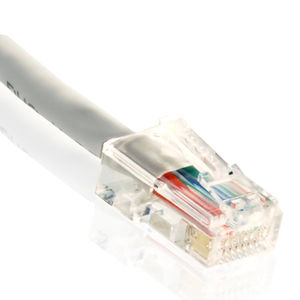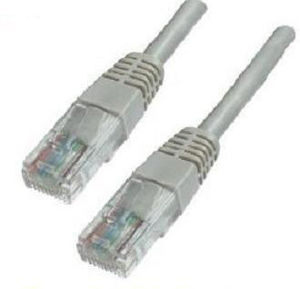Difference between revisions of "Cat5 Connector types"
m (Protected "Cat5 Connector types" ([edit=sysop] (indefinite) [move=sysop] (indefinite))) |
(No difference)
|
Latest revision as of 02:09, 27 March 2010
Category 5 cable is a twisted pair high signal integrity cable type often referred to as Cat5 or Cat-5. Most cables are unshielded (UTP), relying on the twisted pair design for noise rejection, and some are shielded twisted pair(STP). Category 5 has been superseded by the Category 5e specification structured cabling for computer networks such as Ethernet, and is also used to carry many other signals such as basic voice services, token ring, and ATM (at up to 155 Mbit/s, over short distances).
Plain Cat5 Patch Cord (without strain relief and un-booted)
Cat5 Patch Cord with Strain relief
Cat5 Patch Cord with Strain relief and Booted
Patch leads are made from stranded copper wire. The stranded form is more flexible and withstands more bending without breaking and is suited for reliable connections with insulation piercing connectors.
The solid form of cable is used for installation underfloor or in -walls and ceilings or in trunking or conduit. The solid form is less expensive and makes reliable connections into insulation displacement connectors, but makes unreliable connections in insulation piercing connectors.


